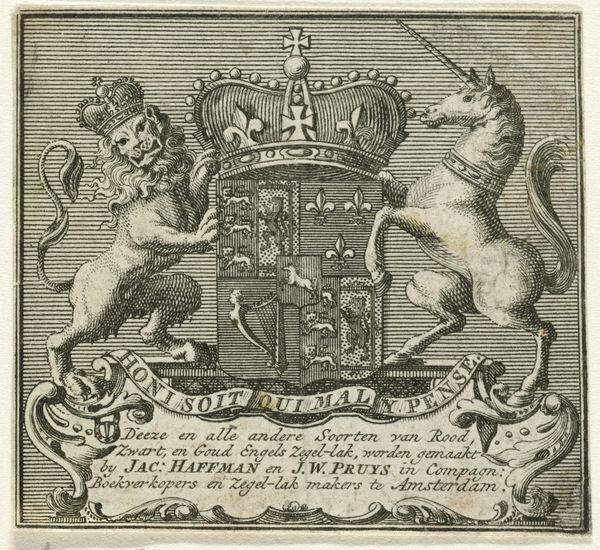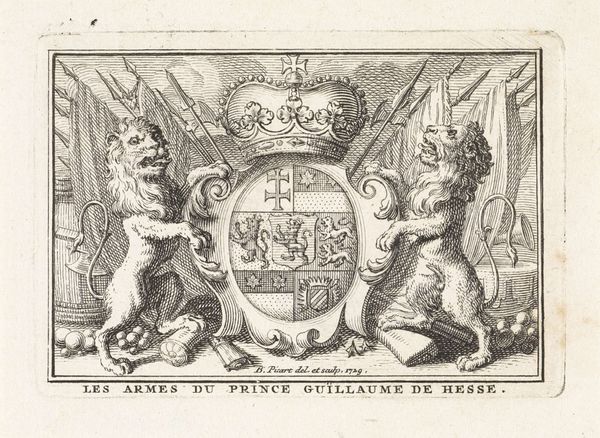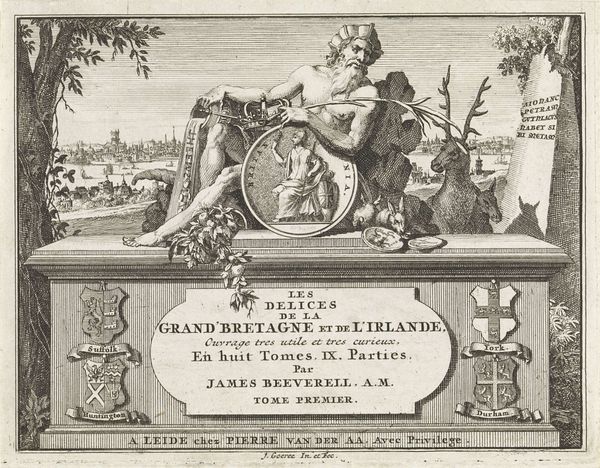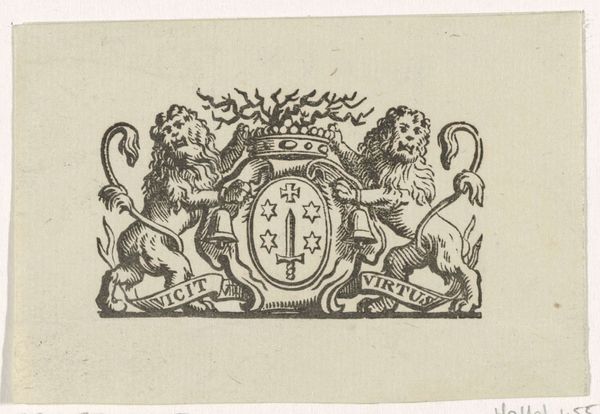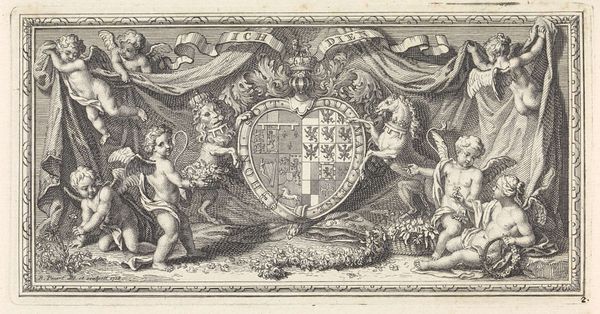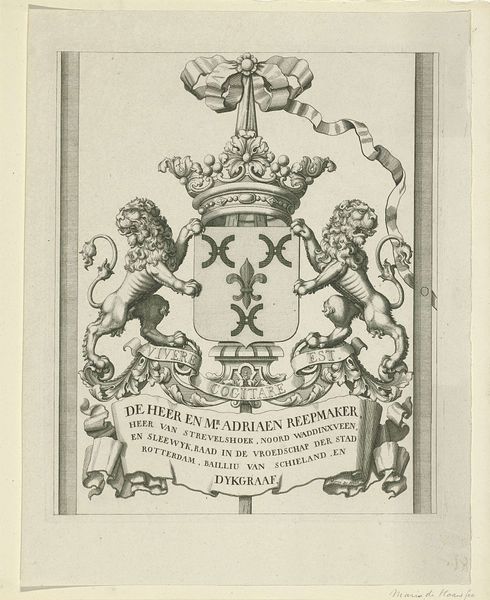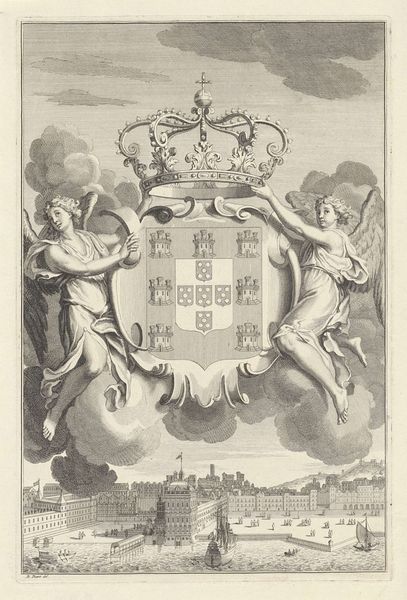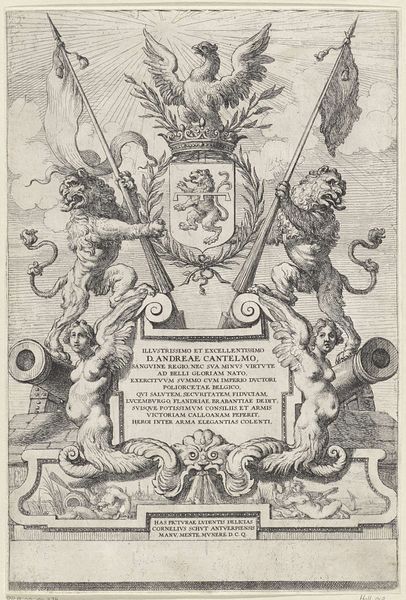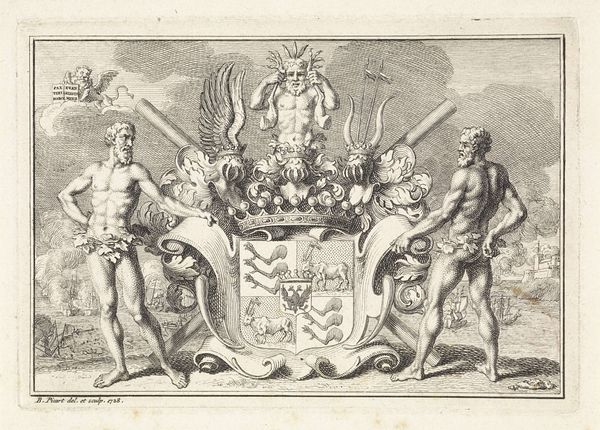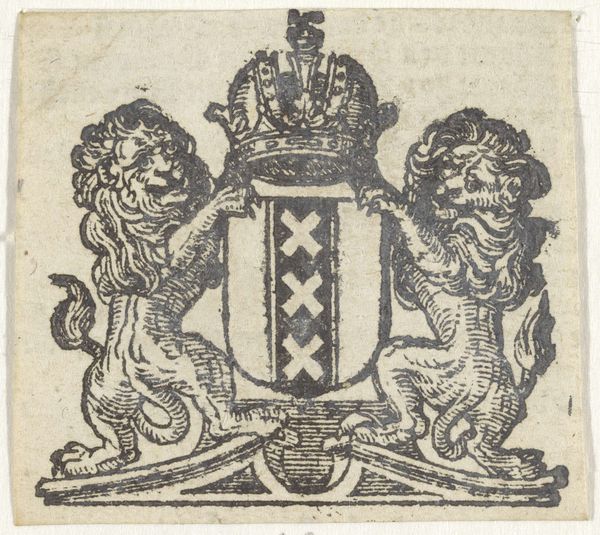
print, engraving
#
portrait
#
allegory
#
baroque
# print
#
old engraving style
#
history-painting
#
engraving
Dimensions: height 69 mm, width 135 mm
Copyright: Rijks Museum: Open Domain
Curator: This engraving, created between 1712 and 1744, depicts the coat of arms of Johan Willem Friso, Prince of Orange-Nassau. Editor: It's fascinating how the dense, linear work gives such an airy and triumphant impression, doesn’t it? There is so much space around the central coat of arms that creates such balanced composition. Curator: The production process behind these prints, and their role in disseminating political power during this era is crucial. Prints allowed for relatively inexpensive reproductions, and therefore the wide distribution of images linked to Johan Willem Friso throughout the Netherlands. It really solidified the Orange-Nassau’s standing. Editor: Absolutely, and let’s not overlook how skillfully the engraver balances various compositional elements. The two allegorical figures on either side of the crest—a goddess possibly representing abundance on the left, balanced with another, possibly Minerva representing justice, create an impressive symmetry, yet both are still very animated, aren’t they? The figures enhance the heraldic design with dynamism and elegance. Curator: Speaking of these two figures, the use of allegory as a visual language connects to larger cultural trends of that time. A prince would certainly utilize well-worn iconography and symbolism to enhance prestige and authority. That in turn creates a dialogue with viewers. What they are meant to extract, the message intended, and how that actually played out in reality... it's all worth exploring! Editor: From the visual point of view, look closely and notice how even the tiniest details, such as the patterns in the clothing, and texture of the landscape behind the figure of justice, contributes to this balanced complexity. The work isn't just heraldry or social commentary, but an investigation into form through skillful linework. The entire plane works almost like a unified field, where these intricate little dots create forms and patterns. Curator: Analyzing this print through the lens of production and consumption helps us see how these images helped normalize ideas about sovereignty. How the print was perceived by the public, whether or not the image met popular demand… all that affects its historical impact. Editor: And the beauty lies in the exquisite execution, a study in balanced composition and sophisticated symbolism that continues to captivate us. Curator: I agree. Considering the circumstances under which this engraving would have been viewed offers unique insight into the function of visual media in the 18th century.
Comments
No comments
Be the first to comment and join the conversation on the ultimate creative platform.
